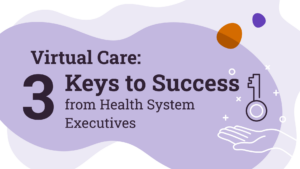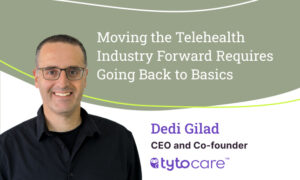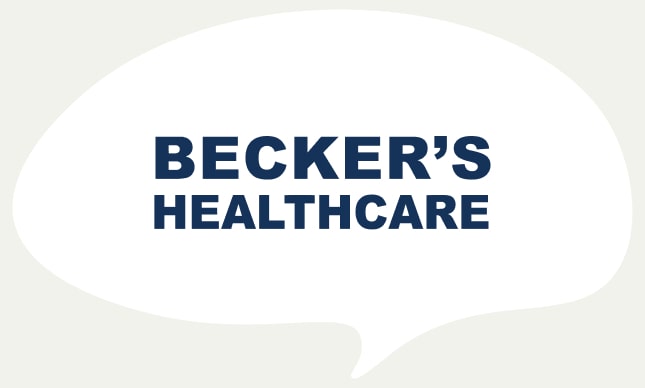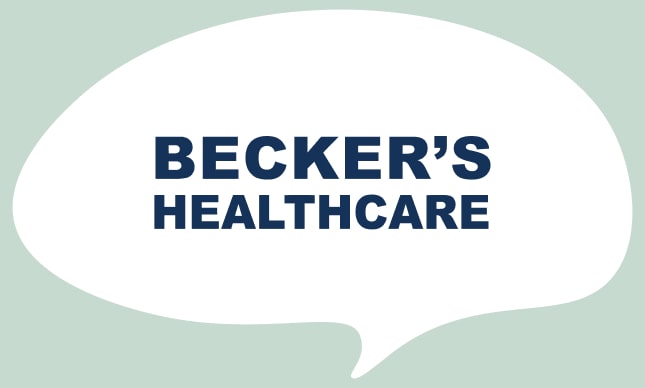Care at remote sites with experts Dr. Jenkins and Dr. Patel

Leveraging remote care sites enables providers to deliver care that is more effective and efficient. TytoCare recently held a webinar on meeting patients wherever they are through remote care sites. Our panelists were Dr. John Jenkins, Medical Director of School-based Care at Cone Health, and Dr. Nick Patel, Digital Health and Strategic Advisor, and the discussion was moderated by Barbara Spruck, AVP of Customer Success at TytoCare. The panelists shared their insights into the challenges and benefits of implementing these programs, and the impacts they have on student health, attendance, and the wider community.
Improving healthcare access and equity
Virtual care is a powerful tool for improving healthcare access and equity, particularly in areas where resources are scarce or non-existent. Remote clinics and telehealth services allow healthcare professionals to reach patients in remote or marginalized communities, providing a cost-effective and efficient way to deliver essential healthcare services.
Dr. Jenkins explained, “Digital health technology is really a doorway to healthcare access. We work in Title 1 Attendance Zones. The federal government defines Title 1 Attendance Zones as ones in which there is a high rate of poverty, about 65%. In North Carolina, specifically in Guilford County, we find that in our Title 1 Attendance Zones, the average family has a total household income of less than $40,000, with many much lower than that.”
At Cone Health, certified medical assistants are being trained to administer medical care in remote settings such as schools. The area also has a large immigrant population, for whom English is not their primary language. A lack of broadband infrastructure compounds the issue of accessibility. Schools are a trusted, accessible location for virtual care delivery. In a school setting, remote care can bring together the child, their parent, an interpreter, and a provider so a child can be examined in a convenient, accessible way..
Dr. Patel shared the challenges families must overcome when even basic primary care access is 50 miles away or more. Digital healthcare can help overcome healthcare gaps by seeing patients where they live or already spend their time. Without it, for example, parents may have to come to school to pick up their child in the middle of the day. They must then leave that child at home and go back to work to preserve the family’s income. That family will then often show up to the emergency room that same night for routine care. Scenarios such as this one could be avoided with remote care delivery at the child’s school.
Care continuity, despite challenges
Despite the challenges of staff shortages and limited internet connectivity, it is crucial to maintain continuity of care in remote clinics. The panelists reiterated the need to ensure patients receive continuous, uninterrupted care, particularly in schools and other community settings. This is particularly important when it comes to primary care, where the shortage of providers has reached record proportions and continues to rise. Virtual care programs can help manage staff shortages by enabling care delivery with fewer personnel.
A shortage of school nurses means they are often stretched thin, dividing their time between several school locations. Virtual care facilitates chronic care management, easing school nurses’ load by tracking chronic conditions such as asthma. Asynchronous tools, such as chatbots and auto-scheduling tools can ease health staff workloads. Regular virtual check-ins can be used to ensure patients are taking their medications and to determine when an in-person visit is necessary.
Trust and convenience are essential for patient engagement in virtual care. Virtual health technology must be easy to use, cost-effective, and accessible for all, including those with low tech literacy. As Dr. Patel put it, “We need to think about our riskiest population in rural areas. And how do we give them technologies that just work and are easy to use?”
Driven by data
Data is essential for tracking the impact of virtual care programs, from reducing absenteeism to improving health outcomes. Both panelists discussed the importance of data in guiding the implementation and management of virtual care remote sites. Collecting and analyzing data helps in understanding the needs of patients, tracking their progress, and assessing the real impact of the services provided. Data insights can also help providers prioritize patients who need care most. Integrating digital systems into the electronic medical record ensures continuity of care and keeps the patient’s primary care provider in the loop.
Dr. Jenkins explained that any initiative should begin with an understanding of the needs of customers – children, their schools, their parents, and the communities being served. These needs determine the metric of success, such as keeping children in their classrooms whenever possible. Cone Health’s school-based virtual care solution had overwhelmingly positive results, according to Dr. Jenkins. “We found out that 95% of the students in our program here at Cone Health returned to the classroom the same day because of our intervention,” he shared. Cone Health also reduced 30% of chronic absenteeism.
Dr. Patel stressed the need for a holistic approach in healthcare delivery, stating, “We have to start thinking about the longitudinal health care that we need to provide a child, and potentially even partner outside of the school, outside of pediatrics, to also [provide] adult medicine for the family. Because if the parents aren’t doing well, then most likely, the kids aren’t doing well, and vice versa.”
Convenience or necessity?
Dr. Patel explained the need to think creatively and practically. Health systems need to adapt and offer virtual care options as consumer preferences shift towards digital health solutions. “We need to stop thinking that patients don’t want [virtual care]. Consumers do want this. And I think health systems and medical groups need to get on board, or what they’re going to find out is they’re going to lose a lot of their commercial-paying patients to those organizations who will provide the service.”
Remote sites of care are being leveraged to engage and support communities through more efficient and effective care to rural and disenfranchised populations. These care sites can help overcome disparities in school performance due to poor attendance, and even life expectancy. Patients who take ownership over their own health journey can stay on top of life-threatening conditions such as diabetes and hypertension. When seen through this lens, it becomes clear that offering remote care is no mere convenience. For many people, access to remote care is clearly a necessity.





